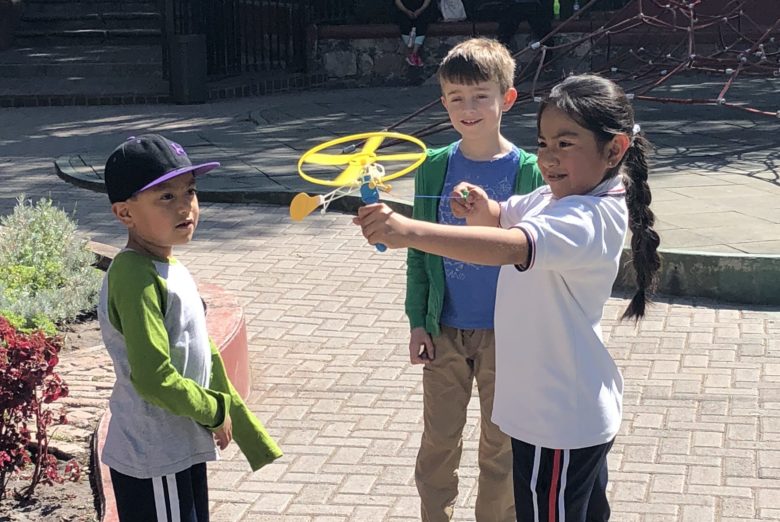My family and I were visiting my wife’s parents in central Mexico recently, when an extraordinary thing happened. We took our two children to a nearby playground, and there were lots of local children playing there at the time. Our son Zach, now eight years old, noticed two other children about his age, a brother and a sister. They seemed to be doing the same kind of playing that he likes to do, and my wife and I could tell that he was fascinated. He really wanted to play with them, but was hesitant to make the approach.
They also seemed interested in him, perhaps in part due to a toy plastic helicopter that he was flying. After a long “dance” where it was obvious that all parties were interested in playing, Zach finally approached and offered them a turn with his toy helicopter.
And what happened next was amazing to watch.
Despite the fact that Zach speaks almost no Spanish (he can order his favorite taco dish… “tres tacos de pollo, con cilantro y cibollos y salsa verde, no salsa rojo”), and that his two playmates spoke no English, they played happily together for more than an hour. They laughed, attempted to speak to each other constantly (not sure what was said… Dad and mom stayed far away, so as not to disturb), and ran around and climbed and swung. It was a spectacular scene to watch.
And even though I watched the scene primarily as a proud parent, I also watched with the perspective of a communications coach. These children found the “common ground” of the playground, and used it to communicate just fine, even though they could not communicate in the traditional sense. The language barrier mattered not a bit.
As I watched them, I kept thinking about the many people we have coached over the years, who need to communicate something that an audience might not understand. We have seen thousands of examples of people who need to garner support for a project that is not well understood… or who need to make their case for a new technology with implications that leadership might not grasp… or identify a risk that no one else yet sees.
And in all these cases, we always coach our clients to look for some common ground so that the audience will have a greater chance of understanding the point.
Common ground… whether we are talking about organizational risk, or project resources, or budgets, or toy helicopters on the playground… Common ground is the answer to almost any communication barrier.
Have a great day.






Comments